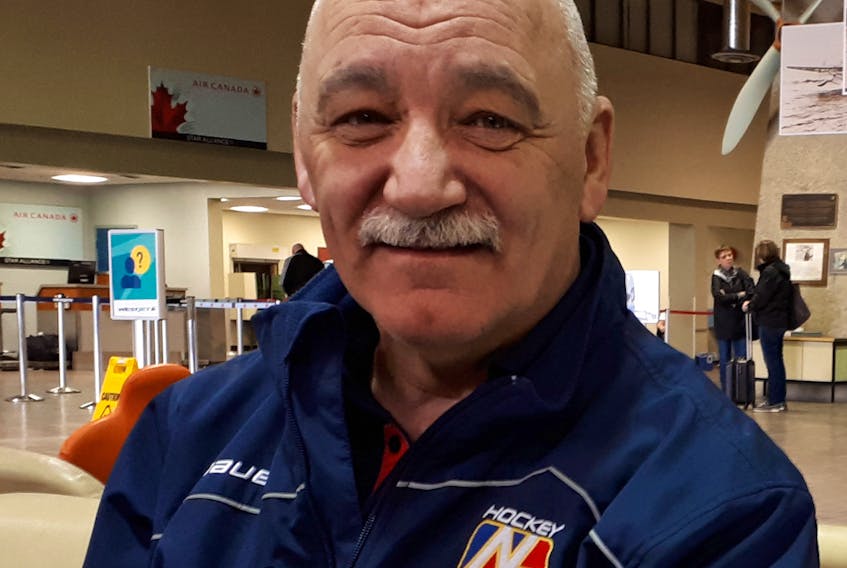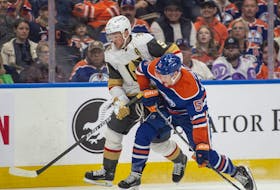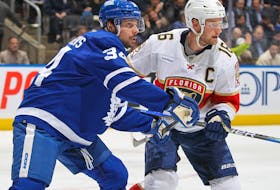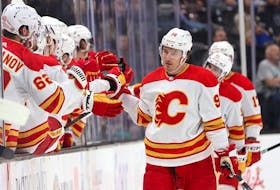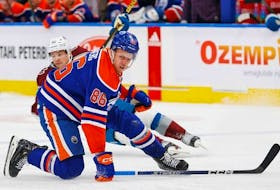Every two years, Hockey Canada makes changes to the rule book after asking minor hockey associations from across the country what can be done to make the game even better.
Rule changes for the 2018-2019 season were made during the annual general meeting of Hockey Canada in Ottawa back in November.
Ed Flood, referee-in-chief for Hockey Newfoundland and Labrador, was among the delegates who attended the annual general meeting with representatives of minor hockey branches from coast-to-coast.
Flood said there were 46 motions put on the table for changes to the rule book, with 14 of them only involving housekeeping issues involving cleaning up language, but at the end of the day Hockey Canada will implement four new rule changes effective start of the 2018-2019 season.
Four rule changes
Hand signal for too many men on the ice
The rule used to be that an official would put up six fingers to signal there was too many players on the ice. The new signal requires the official to put one hand out in front of him and circle the other hand around it in a stirring motion to let people know a team has six players on the ice. This change isn’t viewed as something that would have an impact on how the game is played.
3.6 (c) Protective Equipment
If any player loses a helmet during play they have to stop immediately and put it back on or go directly to the bench. This rule is now changed to include goalkeepers and also the blocker and catching glove of the goalkeeper.
Before the change, if the goalkeeper lost their catching glove or blocker play wasn’t blown down immediately. The new change will see the referee stop play if a goalkeeper accidently loses either. If the goalkeeper loses either, they has to pick it up and put it on and if they refuse to do so they are assessed a minor penalty for delay of game.
4:13 (a) Calling of Penalties
If a player on the team in the possession of the puck commits an infraction of the rules which would call for a match, major, misconduct, bench minor or minor penalty, the referee shall blow the whistle immediately and give the penalty(ies) to the deserving player(s). When this situation leads to a time penalty or multiple time penalties being placed on the penalty time clock to one team, making that team shorthanded, the ensuing face-off shall be conducted at one of the two end zone face-off locations in the offending team’s defending zone. There are five exceptions: (1) when a penalty is assessed after a goal the face-off will take place at centre ice, (2) when a penalty is assessed at the end (or before the start) of a period the face-off will take place at centre ice, (3) when a gathering is taking place following a stoppage of play leading to a penalty and one or both defenceman, point players or any player coming from the player or penalty bench of the attacking team, enter deeply into the attacking zone (the top of the circle being the limit), the ensuing face-off will take place in the neutral zone at one of the face-off dots outside the offending team’s defending zone, (4) when the non-offending team clears the puck and icing is called the ensuing face-off will take place at one of the face-off spots outside the zone of the team that iced the puck and (5) when a stoppage of play results due to the non-offending being guilty of premature substitution of the goaltender the ensuing face-off shall take place at centre ice. The exception would be in cases where the offending team would gain a territorial advantage by having the face-off take place at centre, in which case the face-off shall take place where the stoppage of play occurred as per Hockey Canada Rule 10.2 (g).
4. Tripping (slew foot)
The new rule says a double minor or match penalty would be assessed for slew foot at discretion of referee based on the degree of violence of the impact with the ice. It used to be an automatic match penalty. A player standing still in front of net and somebody takes him down it’s a double minor because it wasn’t deemed violent, but if a player is moving and the official views it as a violent play then it’s an automatic match penalty.

